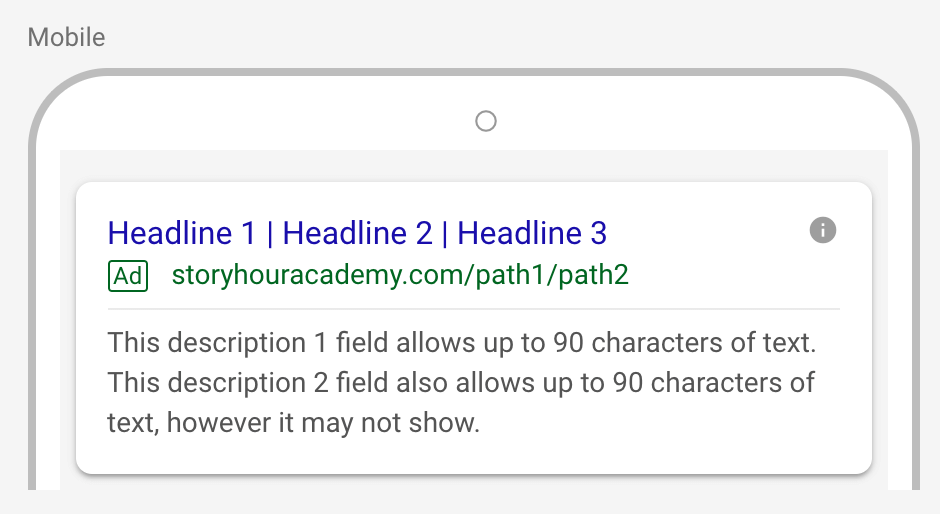
A search campaign with Google Ads (formerly known as AdWords) displays text ads on the top and bottom of Google’s search result page, and/or Google’s network of search partners. These campaigns can help your tour or activity business thrive as long as you learn how to make it work for your unique business. This can be done by following this simple, seven-step process:
1. Define Your Goal
Most tour and activity businesses want to drive bookings. If that’s your goal, too, then clearly define it and make sure that you can measure it by choosing an online booking software that supporting Google Ads tracking, like Xola, or by adding Google Ads conversion tracking codes to the thank you pages of your website.
If your goal is something else, such as driving referrals or increasing awareness, then clearly define that and implement ways to measure success. Driving awareness, for example, can be measured by an increase in the volume of new visitors to your site, an increase in pageviews, or an increase in the number of people that subscribe to your newsletter, just to name a few. So, it is crucial to first clearly define your goal, such as to ‘increase awareness for our offerings as indicated by an increase in the number of people that view our activity pages.’ And second, it is imperative to measure it. For example, you can study the number of unique visitors (excluding staff) that view one of your activity pages for more than 20 seconds.
2. Describe Your Target Audience
You probably already have an idea of the type of people that make your best customers. Before advertising with Google, write down what you know about your ideal audience. Start by answering these questions:
- Are men or women more likely to make a booking?
- What age range does your audience fit into? While your guests might be of all ages, what is the most common age bracket for the people that make the booking?
- Has your audience visited your website recently, or not? If you are not sure, start asking customers how they heard of you.
- What categories of things or activities is your audience interested in? If the experiences you provide reliably overlap with other interests or activities state them here.
3. Research Keywords
Now that you know who your audience is and what you want them to do, you can research the keywords that will bring them from Google’s search engine to your website. At this stage, you’ll want to answer the following questions, with the first three being easily answered by looking at your search traffic on Google Analytics, or by asking your customers:
- Can you reach your audience with branded keywords, such as your business name, business + activity, etc.? If so, which ones?
- What are the broadest search terms that your audience could use to find you? For example, “things to do near me” is a very broad search, which could perform well in conjunction with location-based targeting.
- What are the terms that your audience is the most likely to use to look for a business such as yours? You can get help answering this one from your customers. Just ask them how they found you.
- What location keywords can you combine with your priority keywords to make location-specific keywords?
Then, look into the keywords that your competitors bid on. Some keywords are easy enough to detect by searching Google and seeing when your competition comes up in ads. Other keywords are harder to detect and a tool like SEMrush can help provide information and surface some interesting opportunities.
Lastly, of the keywords you generated by answering the four questions above and by researching how your competitors use Google Ads, which keywords are the best in terms of volume, relevance, competition, and cost? Here, too, you can use a handful of tools to assess search volumes, competition, and costs including Moz and SEMrush.
4. Create Your Campaign Structure
The way you organize your Google Ads search campaign will depend on how you’ve answered the questions above. But generally speaking, a Google Ads search campaign is structured like a Facebook Ads campaign. The highest level is the campaign where you lay out the campaign type (search), bidding strategy, and overall campaign budget. One level deeper is the Ad Group, where you define your targeting, keywords, and maximum CPC rate. And the last level of the campaign contains the Ads, where you craft your messaging.
There are also a few best practices that you should consider following. For example:
- If you’ll be bidding on branded and generic keywords, break those out into separate campaigns.
- Within a campaign, look for ways to group your keywords into themes and then create Ad Groups for those themes. For example, you may want to create an Ad Group for consumer bookings and another for corporate events, as the searches differ widely between those groups. These Ad Groups will hold all keywords and ads related to that customer type.
5. Set Your Budget
Every Google Ads campaign must have a daily budget. This is the average amount that you want to spend each day. In our post about running Google Ads without spending more, we recommended creating a budget based on some multiple of the profit you earn on the average customer.
Before you launch your first Google Ads campaign, you will not know what your cost for customer acquisition on this paid channel is, so your best bet would be to lay out an initial budget based on your break-even point (so you know you are not losing money). Later, you can optimize your bids based on the average profit that you see from bookings coming from Google Ads. For example, let’s say you earn $50 on the average customer and you think that your search ads can attract 10 new customers each month. To break even, you would need to cap your search campaign spending at $500 dollars for the month. Now, divide this by 30 to get a daily budget. Ultimately, the equation for your daily budget will be:

6. Populate and Begin Your Campaign
Now that you’ve thought through some of the most important aspects of your Google Ads search campaign, it’s time to set it up. Go to ads.google.com to create an account (if you don’t already have one) and login. Once you’re logged in, click the “GO TO” button with the magnifying glass in the header action bar and type “New campaign.” This will open up the campaign creation tool. From here, you just follow the prompts on your screen, including defining your goal, how you’d like to reach it, determining the campaign type, etc. The thinking that you’ve already put into your campaign will make the setup process easy.
Soon, you’ll get to a screen that says “Create ads.” There’s a lot of fields on this screen that need to be filled out. The main fields are as follows:
- Final URL – This is the URL that the ad will take users to. It can be a long, messy url because it isn’t the URL that will display in the ad.
- Headline 1, 2, and 3 – These 3 fields populate the headline for your ad. You only have to use the first one. When you use the 2nd and 3rd fields, Google adds a pipe (|) character between each instance of headline copy.
- Display path – This is where you set the display URL for your ad. You can include up to two directory paths in your display URL.
- Description 1 and 2 – These 2 fields populate the ad copy below your display URL. The first one will always show. The second one may not show due to space constraints on the SERP.
Here’s the basic template for a desktop ad:

Here’s the basic template for a mobile ad:

There are a few tips to consider when you’re writing ad copy. The first is to be relevant and concise by either speaking to your benefits very clearly or by speaking to the search intent of the people you’re reaching. For example, if your audience is searching for “best activities near me,” show them an ad that promises to answer this question rather than show them a generic ad about a service or offer.
The second copywriting tip is to make it personal. You can do that pretty simply using words like “you” instead of “we.” This will help ensure that your ads address the person searching and his or her needs.
7. Run Tests and Improve Over Time
Lastly, always have a test running that can help inform the way that you improve your Google Ads search campaign over time. When you create new ads, create a/b or even multiple variant tests with at least two different variations of ad copy. Google Ads automatically delivers the best performing creative variation based on consumer activity, so feel free to create as many ad variations as you can.
If you’re unsure about your targeting criteria, a/b test two different targeting options (for example 2 different locations, or 2 different demographics) in order to see which is most effective. Keep in mind that testing and optimization aren’t limited to ad campaigns. You should also test and tweak your landing pages to find the perfect combination for getting search engine users to book with you.
Conclusion
Google Ads are great drivers of growth, when set up correctly based on your business’s unique goals and needs. Take some time to lay out your advertising goals, target audience, and keyword strategy before you create your first campaign. This thought process will help you know what you want to achieve and how you mean to achieve it. This information will also help you speed up the campaign set-up process, as it largely overlaps with the steps in Google’s Ad Creator tool.
Once your campaign is live, the most important action is to continue to test, measure, and review your results. Then, optimize your campaign, ads, and landing pages based on the performance you see. Keep repeating these steps as long as you’re advertising with Google (or any other platform) because there’s always room for improvement, especially as you venture out to bid on new keywords or new target audiences .





